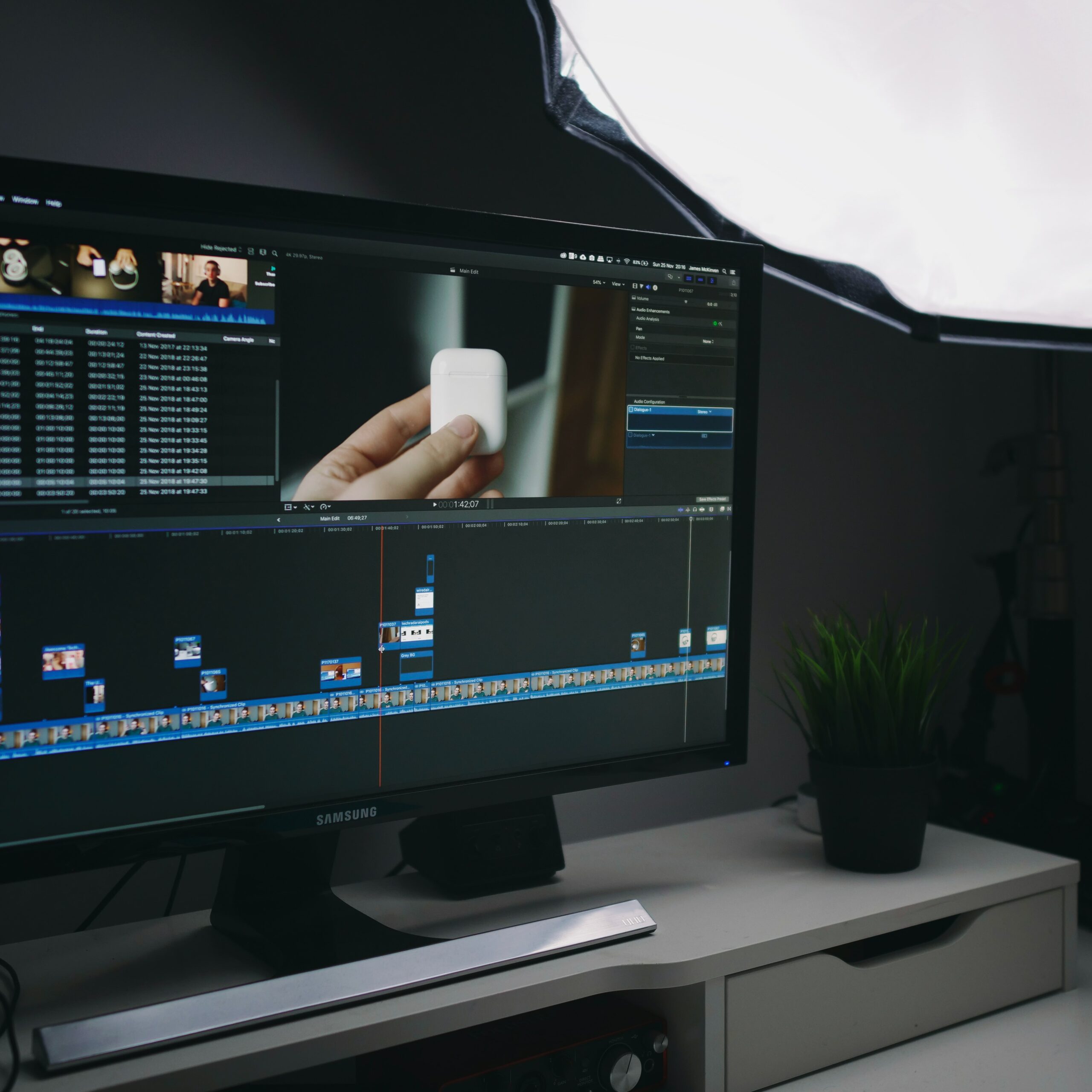Creating a great movie using a video editor involves several key steps, from planning and shooting to editing and polishing. Here’s a step-by-step guide to help you make a compelling and well-edited movie:
- Pre-production: a. Concept and Script: Start by developing a clear concept and script for your movie. Outline the story, characters, dialogue, and scenes. A well-structured script is crucial for a successful film.
b. Storyboarding: Create a storyboard or shot list to visualize each scene and shot you plan to capture. This will help you stay organized during filming.
c. Location and Casting: Choose suitable locations for your scenes and cast the right actors for your characters.
d. Equipment and Crew: Gather the necessary camera and audio equipment, and if possible, assemble a team, including a director, cinematographer, sound recordist, and production assistants.
- Production: a. Filming: Follow your storyboard and script to capture high-quality footage. Pay attention to lighting, composition, and sound quality during the shoot.
b. Audio: Record clear and high-quality audio. Use external microphones and ensure that there is minimal background noise.
c. Multiple Takes: Don’t hesitate to shoot multiple takes of a scene to capture the best performance and angles.
- Post-production: a. Import Footage: Transfer your video and audio footage to your video editing software. Make sure your files are well-organized.
b. Editing: Start the editing process by assembling your footage in the timeline. Cut unnecessary footage, arrange scenes in the correct order, and add transitions between shots.
c. Audio Editing: Edit and enhance the audio, including dialogue, music, and sound effects. Ensure a balanced mix and use audio transitions where necessary.
d. Visual Effects: Add any necessary visual effects or graphics to enhance the storytelling.
e. Color Correction and Grading: Adjust the colors and contrast of your footage to create a consistent and visually appealing look. Color grading can help set the mood and tone of your film.
f. Titles and Credits: Include opening titles, closing credits, and any on-screen text necessary for the narrative.
g. Music and Soundtrack: Choose appropriate music or a soundtrack that complements your film and enhances the emotional impact.
h. Final Touches: Review and fine-tune your edit, paying attention to pacing, storytelling, and continuity. Make sure the audio syncs perfectly with the video.
- Export and Distribution: a. Export Settings: Choose the appropriate export settings for your intended distribution platform (e.g., YouTube, Vimeo, film festival, DVD, or Blu-ray). Ensure the highest quality possible.
b. Test Screenings: Before finalizing your movie, consider showing it to a small audience for feedback. This can help you identify areas for improvement.
c. Distribution: Upload your movie to the chosen platform or prepare it for screening at film festivals or private screenings.
- Promotion and Marketing: a. Create a Trailer: Make a compelling trailer to generate interest in your movie.
b. Film Festivals: Submit your film to relevant film festivals to gain exposure and recognition.
c. Online Promotion: Promote your movie on social media, through a website, or by collaborating with film-related influencers.
- Feedback and Iteration: a. Collect Feedback: Listen to audience feedback and reviews, and consider making improvements for future projects.
Making a great movie using a video editor requires a combination of creative storytelling, technical skills, and attention to detail. Continuously learning and experimenting with different editing techniques and styles will help you improve over time.

